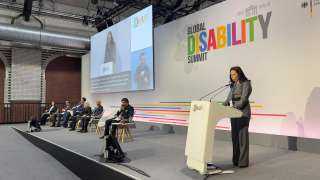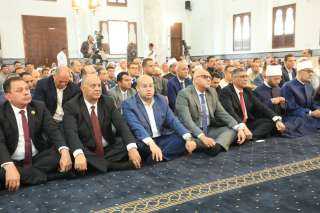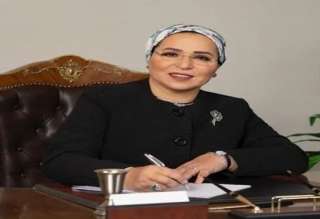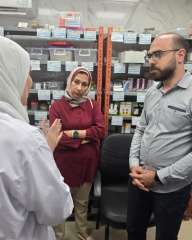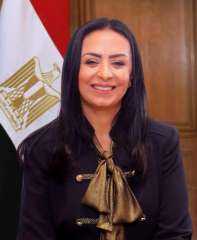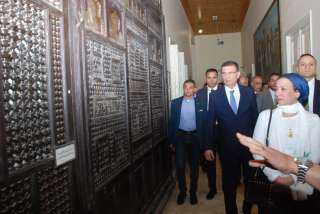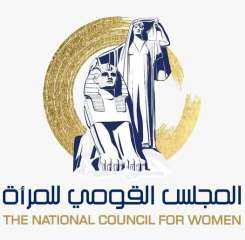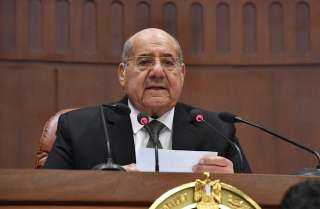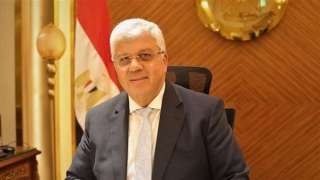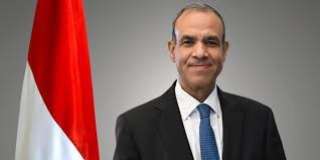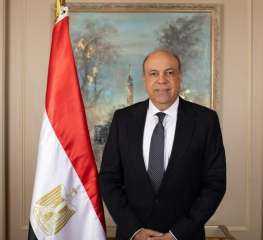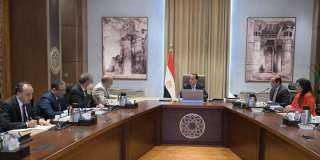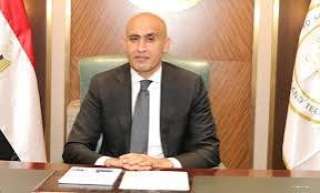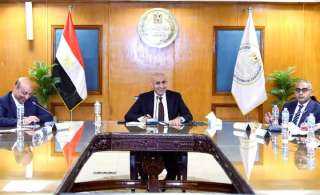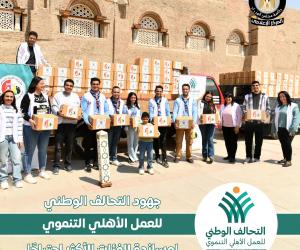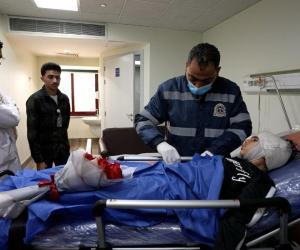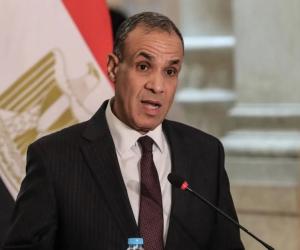المشرف العام على ”القومي للأشخاص ذوي الإعاقة” تشارك بورقة عمل في الحدث الجانبي للقمة العالمية للإعاقة بـ”برلين”
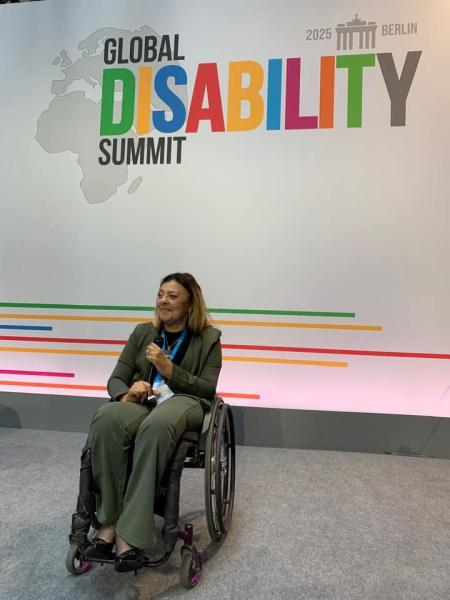

شاركت الدكتورة إيمان كريم، المشرف العام على المجلس القومي للأشخاص ذوي الإعاقة، بورقة عمل في الحدث الجانبي الذي عُقد اليوم، على هامش القمة العالمية للإعاقة 2025، تحت عنوان "التكنولوجيا والإبداع وريادة الأعمال: داعم للعيش باستقلالية للأشخاص ذوي الإعاقة"، يأتي ذلك في إطار مشاركة وفد مصري رفيع المستوى، في القمة العالمية للإعاقة، وترأست الوفد الدكتورة مايا مرسي وزيرة التضامن الاجتماعي، فيما ضم الوفد نخبة من المتخصصين من وزارة التضامن الاجتماعي والمجلس القومي للأشخاص ذوي الإعاقة.
خلال الحدث الجانبي أوضحت الدكتورة إيمان كريم المشرف العام على المجلس القومي للأشخاص ذوي الإعاقة، أن العالم يشهد طفرة كبيرة وتقدمًا واسعًا في التحول الرقمي، لافته أن التكنولوجيا لم تعد رفاهية، بل أصبحت حاجة أساسية، لاسيما للأشخاص ذوي الإعاقة التي أضحت لهم جسرًا نحو الاستقلالية والمشاركة الفعالة في المجتمع.
واستعرضت "المشرف العام على المجلس" خلال كلمتها في الحدث الجانبي ورقة حملت عنوان "الجسور الرقمية : تحويل التحديات إلى فرص للعيش باستقلالية"، لافته أن هذه الورقة تستكشف هذه الورقة قدرة التكنولوجيا والإبداع وريادة الأعمال في التحول من مجرد أدوات إلى محركات حقيقية للتمكين والاستقلالية، وذلك من خلال إعادة النظر للواقع الحالي لوضع التحديات التي تنتظر الحلول نصب أعيننا لتكن نقطة الانطلاقة تجاه للتحول، وتتمثل التحديات الرئيسية في عدة صورة الأولى تتمثل في فجوة الوصول حيث 60% من الأشخاص ذوي الإعاقة في المنطقة العربية لا يستطيعون الوصول إلى التكنولوجيات المساعدة الأساسية بسبب ارتفاع التكلفة ومحدودية التوافر، وتأتي في المرتبة الثانية حواجز ريادة الأعمال التي تتمثل في نقص التدريب المتخصص، ومحدودية التمويل، والعوائق البيئية التي تحد من إمكانات رواد الأعمال ذوي الإعاقة.
أضافت كما تأتي الصورة النمطية في المرتبة الثالثة التي تتمثل في استمرار المفاهيم الخاطئة حول قدرات الأشخاص ذوي الإعاقة على الابتكار وقيادة المشاريع، والرابعة تدور حول التنسيق المؤسسي حيث تعمل العديد من المؤسسات المختلفة كجزر منعزلة مما يؤدي إلى هدر الموارد وضعف الأثر، والصورة الخامسة تتمثل في الابتكار كمحرك للتغيير ومنها الإمكانات التكنولوجية الواعدة كتطبيقات الذكاء الاصطناعي، وبرامج الترجمة الفورية للغة الإشارة، وتقنيات التعرف على الكلام والصور، والواقع الافتراضي والمعزز المستخدم في تطوير مهارات جديدة، وله القدرة على تجاوز القيود المكانية، فضلًا عن التقنيات القابلة للارتداء كالنظارات الذكية للمكفوفين، والأطراف الاصطناعية الذكية، وأنظمة المراقبة الصحية المتطورة، والمنصات الرقمية الشاملة التي تتيح فرصًا للعمل عن بعد والتعلم المستمر.
أشارت "كريم" أن هناك العديد من النماذج الريادية الملهمة في مجال الابتكار الرقمي للتكنولوجيا المساعدة للأشخاص ذوي الإعاقة منها مبادرة "مدرستي للصم" في مصر، التي تربط المعلمين بالأطفال الصم من خلال منصات تعليمية متخصصة، والشبكة القومية لخدمات تأهيل الأشخاص ذوي الإعاقة التي تقدم الدعم التكنولوجي لهم للوصول إلى فرص أفضل للتطوير الوظيفي، عن طريق دعم أصحاب الأعمال لتوظيف الأشخاص ذوي الإعاقة ودعم مقدمو الخدمات للنفاذ إلى الأشخاص ذوي الإعاقة، والشبكة ومنصة "نفاذ" في قطر لتطويع التكنولوجيا لخدمة الأشخاص ذوي الإعاقة، وشركة "سنابل" في الأردن، التي يقودها أشخاص ذو إعاقة وتقدم حلولاً تقنية مبتكرة لتعزيز الاستقلالية.
تابعت أن هذه الورقة تقدم عددًا من الاستراتيجيات الفعالة للتمكين التكنولوجي والرقمي للأشخاص ذوي الإعاقة التي تستهدف تحقيق استقلالية لهم حال تطبيقها في المجتمعات، وتتمثل الاستراتيجية الأولى في تطوير منصات رقمية متاحة ومخصصة لهم كالمنصات التعليمية والتدريبية التي تراعي مختلف أنواع الإعاقات، مع التركيز على توفير المحتوى بصيغ متعددة (نص، صوت، فيديو، لغة إشارة)، وواجهات استخدام مرنة تناسب القدرات المختلفة، وإنشاء محتوى مخصص حسب احتياجات كل فئة، والإستراتيجية الثانية تتمثل في إنشاء حزمة متكاملة لرواد الأعمال، من خلال إطلاق برنامج شامل لدعم رواد الأعمال من ذوي الإعاقة يتضمن تدريب متخصصين في المهارات الرقمية وريادة الأعمال، وتوفير خدمات إرشاد وتوجيه من خبراء ورواد أعمال ناجحين، مع توفير حاضنات أعمال مجهزة لاستيعاب احتياجات مختلف الإعاقات، بالإضافة إلى المنح والقروض الميسرة الداعمة المشروعات الناشئة.
استطردت فيما تتمثل الاستراتيجية الثالثة في صندوق الابتكار الشامل، وذلك من خلال إنشاء صندوق استثماري متخصص في دعم تطوير التكنولوجيا المساعدة محليًا بأسعار مناسبة، وتمويل المشاريع الريادية التي يقودها أشخاص ذو إعاقة، مع توفير منح لشراء التكنولوجيا المساعدة للأفراد من ذوي الدخل المحدود، أما الاستراتيجية الرابعة تتمثل في تكوين شراكات فعالة وتكاملية، من خلال بناء منظومة تعاون متكاملة تجمع 4 أطراف، المؤسسات الحكومية كمشرعة وداعمة للسياسات، والقطاع الخاص كمستثمر ومطور للحلول، والمجتمع المدني كممثل لاحتياجات الأشخاص ذوي الإعاقة، والمؤسسات الأكاديمية كحاضنات للابتكار والبحث.
وقدمت "المشرف العام على المجلس" في الحدث الجانبي من خلال ورقة العمل خارطة طريق للتنفيذ على عدة مراحل، المرحلة الأولى منها تتضمن الأساسيات ويتم تنفيذها على مدار 6 أشهر، وتشمل تقييم الاحتياجات وتحديد الأولويات، وبناء قاعدة بيانات للتكنولوجيات المتاحة والثغرات، وإطلاق حملات توعية حول أهمية التكنولوجيا المساعدة، والمرحلة الثانية تشمل البناء، ويتم تنفيذها على مدار 12 شهر، وتتضمن تنفيذ برامج تدريبية متخصصة في المهارات الرقمية وريادة الأعمال، وإطلاق صندوق الابتكار الشامل وتحديد آليات التمويل، وإنشاء منصات رقمية شاملة للتدريب والتواصل، والمرحلة الثالثة هي التوسع والاستدامة ويتم تنفيذها على مدار 24 شهر، وتشمل توسيع نطاق البرامج لتشمل على مناطق جغرافية أوسع، وبناء شبكات إقليمية لتبادل الخبرات والابتكارات، مع قياس الأثر وتوثيق التجارب الناجحة.
وأوصت ورقة العمل بالبدء في مشروعات سريعة الأثر كاطلاق مبادرات محددة ذات أثر ملموس وتكلفة متزنة كنقاط انطلاق، مع الاستثمار في بناء القدرات من خلال تركيز الموارد على تنمية المهارات الرقمية وريادية الأعمال للأشخاص ذوي الإعاقة، وتبني نهج تشاركي يعمل على إشراك الأشخاص ذوي الإعاقة في جميع مراحل التخطيط والتنفيذ، تطبيقاً لمبدأ "لا شيء عنا بدوننا"، وإنشاء مركز إقليمي للابتكار متخصص في تطوير ونقل التكنولوجيا المساعدة على المستوى الإقليمي، وتطوير إطار السياسات الداعمة من خلال صياغة سياسات متكاملة تدعم استخدام التكنولوجيا المساعدة وريادة الأعمال للأشخاص ذوي الإعاقة.
وأكدت "إيمان كريم المشرف العام على المجلس" في ختام كلمتها على أن تمكين الأشخاص ذوي الإعاقة من خلال التكنولوجيا والإبداع وريادة الأعمال ليس مجرد التزام أخلاقي وقانوني، بل هو استثمار استراتيجي في مستقبل أكثر شمولاً وإنتاجية فعالة، لافته أنه من خلال بناء الجسور الرقمية، يمكننا تحويل التحديات إلى فرص، والقيود إلى إمكانات، والاعتماد إلى استقلالية، مشددة أن الوقت قد حان للانتقال من مرحلة الشعارات إلى مرحلة العمل الفعلي، ومن الرؤى إلى الإنجازات الملموسة، فالتكاتف معاً يمكننا من بناء عالم تكون فيه التكنولوجيا أداة تمكين للجميع دون استثناء.
الجدير بالذكر أن القمة العالمية للإعاقة عُقدت فعالياتها على مدار يومي 2 و 3 أبريل 2025 في برلين، بألمانيا الإتحادية، بتنظيم مشترك بين ألمانيا والأردن والتحالف الدولي للإعاقة، وتجمع القمة الحكومات والأمم المتحدة والمجتمع المدني والأشخاص ذوي الإعاقة لدفع التزامات ملموسة نحو تنمية شاملة للإعاقة، وبمشاركة حكومات ومنظمات دولية ومؤسسات المجتمع المدني، بهدف تعزيز الإدماج والعدالة للأشخاص ذوي الإعاقة على مستوى العالم.
وتُعد القمة العالمية للإعاقة منصة استراتيجية لبحث سبل التعاون المشترك والاستفادة من التجارب الناجحة، بما يسهم في تحسين جودة حياة الأشخاص ذوي الإعاقة، وتفعيل مشاركتهم المجتمعية بشكل أكثر شمولًا وفاعلية.
Press Release from the National Council for Persons with Disabilities
Cairo: Thursday, April 3, 2025
General Supervisor of "National Council for Persons with Disabilities" Presents Working Paper at Side Event of Global Disability Summit in Berlin Titled "Digital Bridges: Transforming Challenges into Opportunities for Independent Living"
Iman Karim, General Supervisor of the National Council for Persons with Disabilities:
The world is witnessing a major boom and extensive progress in digital transformation, and technology is no longer a luxury but has become a basic necessity
There are many inspiring pioneering models in the field of digital innovation for assistive technology for persons with disabilities, such as the "My School for the Deaf" initiative in Egypt, which connects teachers with deaf children through specialized educational platforms
Recommends starting quick-impact projects such as launching specific initiatives with tangible impact and balanced cost as starting points, investing in capacity building, and adopting a participatory approach that involves persons with disabilities in all planning and implementation phases
Empowering persons with disabilities through technology, creativity, and entrepreneurship is not just a moral and legal obligation but a strategic investment in a more inclusive future with effective productivity
Dr. Iman Karim, General Supervisor of the National Council for Persons with Disabilities, participated as part of a high-level Egyptian delegation in a side event held today on the margins of the Global Disability Summit 2025, titled "Technology, Innovation and Entrepreneurship: Supporting Independent Living for Persons with Disabilities," presenting a working paper. This participation comes within the framework of the high-level Egyptian delegation headed by Dr. Maya Morsi, Minister of Social Solidarity, at the Global Disability Summit, with the delegation including specialists from the Ministry of Social Solidarity and the National Council for Persons with Disabilities.
During the side event, Dr. Iman Karim, General Supervisor of the National Council for Persons with Disabilities, explained that the world is witnessing a major boom and extensive progress in digital transformation, noting that technology is no longer a luxury but has become a basic necessity, especially for persons with disabilities, for whom it has become a bridge toward independence and effective participation in society.
The General Supervisor presented a paper titled "Digital Bridges: Transforming Challenges into Opportunities for Independent Living," noting that this paper explores the capacity of technology, innovation, and entrepreneurship to transform from mere tools into real drivers of empowerment and independence. This is achieved by reassessing the current reality to put challenges awaiting solutions before us as a starting point toward transformation. The main challenges appear in several forms: the first is the access gap, where 60% of persons with disabilities in the Arab region cannot access basic assistive technologies due to high costs and limited availability; the second is entrepreneurship barriers represented by lack of specialized training, limited funding, and environmental obstacles that limit the potential of entrepreneurs with disabilities.
She added that stereotypes come in third place, represented by persistent misconceptions about the capabilities of persons with disabilities to innovate and lead projects. The fourth revolves around institutional coordination, where many different institutions work as isolated islands, leading to wasted resources and weak impact. The fifth form is innovation as a driver for change, including promising technological possibilities such as artificial intelligence applications, real-time sign language translation programs, speech and image recognition technologies, and virtual and augmented reality used in developing new skills, which has the ability to overcome spatial limitations, as well as wearable technologies such as smart glasses for the blind, smart prosthetics, advanced health monitoring systems, and inclusive digital platforms that provide opportunities for remote work and continuous learning.
Karim pointed out that there are many inspiring pioneering models in the field of digital innovation for assistive technology for persons with disabilities, including the "My School for the Deaf" initiative in Egypt, which connects teachers with deaf children through specialized educational platforms; the National Network for Rehabilitation Services for Persons with Disabilities, which provides technological support to them to access better opportunities for career development by supporting employers to employ persons with disabilities and supporting service providers to reach persons with disabilities; the "Mada" platform in Qatar for adapting technology to serve persons with disabilities; and "Sunbulah" company in Jordan, led by persons with disabilities, which provides innovative technical solutions to enhance independence.
She continued that this paper presents a number of effective strategies for technological and digital empowerment of persons with disabilities, aimed at achieving independence for them if applied in societies. The first strategy is to develop accessible and specialized digital platforms for them, such as educational and training platforms that take into account different types of disabilities, focusing on providing content in multiple formats (text, audio, video, sign language), flexible user interfaces that suit different abilities, and creating customized content according to the needs of each category. The second strategy is to create an integrated package for entrepreneurs by launching a comprehensive program to support entrepreneurs with disabilities that includes specialized training in digital skills and entrepreneurship, providing mentoring services from experts and successful entrepreneurs, providing business incubators equipped to accommodate the needs of various disabilities, in addition to grants and soft loans supporting startups.
She elaborated that the third strategy is the Inclusive Innovation Fund, through establishing a specialized investment fund to support the development of locally affordable assistive technology, financing pioneering projects led by persons with disabilities, and providing grants for purchasing assistive technology for individuals with limited income. The fourth strategy is to form effective and complementary partnerships by building an integrated cooperation system that brings together four parties: government institutions as legislators and policy supporters, the private sector as investors and solution developers, civil society as representatives of the needs of persons with disabilities, and academic institutions as incubators for innovation and research.
The General Supervisor presented an implementation roadmap through the working paper. The first phase includes the basics, implemented over 6 months, including needs assessment and priority setting, building a database of available technologies and gaps, and launching awareness campaigns on the importance of assistive technology. The second phase, Building, is implemented over 12 months and includes implementing specialized training programs in digital skills and entrepreneurship, launching the Inclusive Innovation Fund and defining funding mechanisms, and establishing inclusive digital platforms for training and communication. The third phase, Expansion and Sustainability, is implemented over 24 months and includes expanding the scope of programs to cover wider geographical areas, building regional networks for exchanging experiences and innovations, and measuring impact and documenting successful experiences.
The working paper recommended starting quick-impact projects such as launching specific initiatives with tangible impact and balanced cost as starting points, investing in capacity building by focusing resources on developing digital skills and entrepreneurship for persons with disabilities, adopting a participatory approach that involves persons with disabilities in all stages of planning and implementation, applying the principle of "Nothing About Us Without Us," establishing a regional innovation center specialized in developing and transferring assistive technology at the regional level, and developing a supportive policy framework through formulating integrated policies that support the use of assistive technology and entrepreneurship for persons with disabilities.



